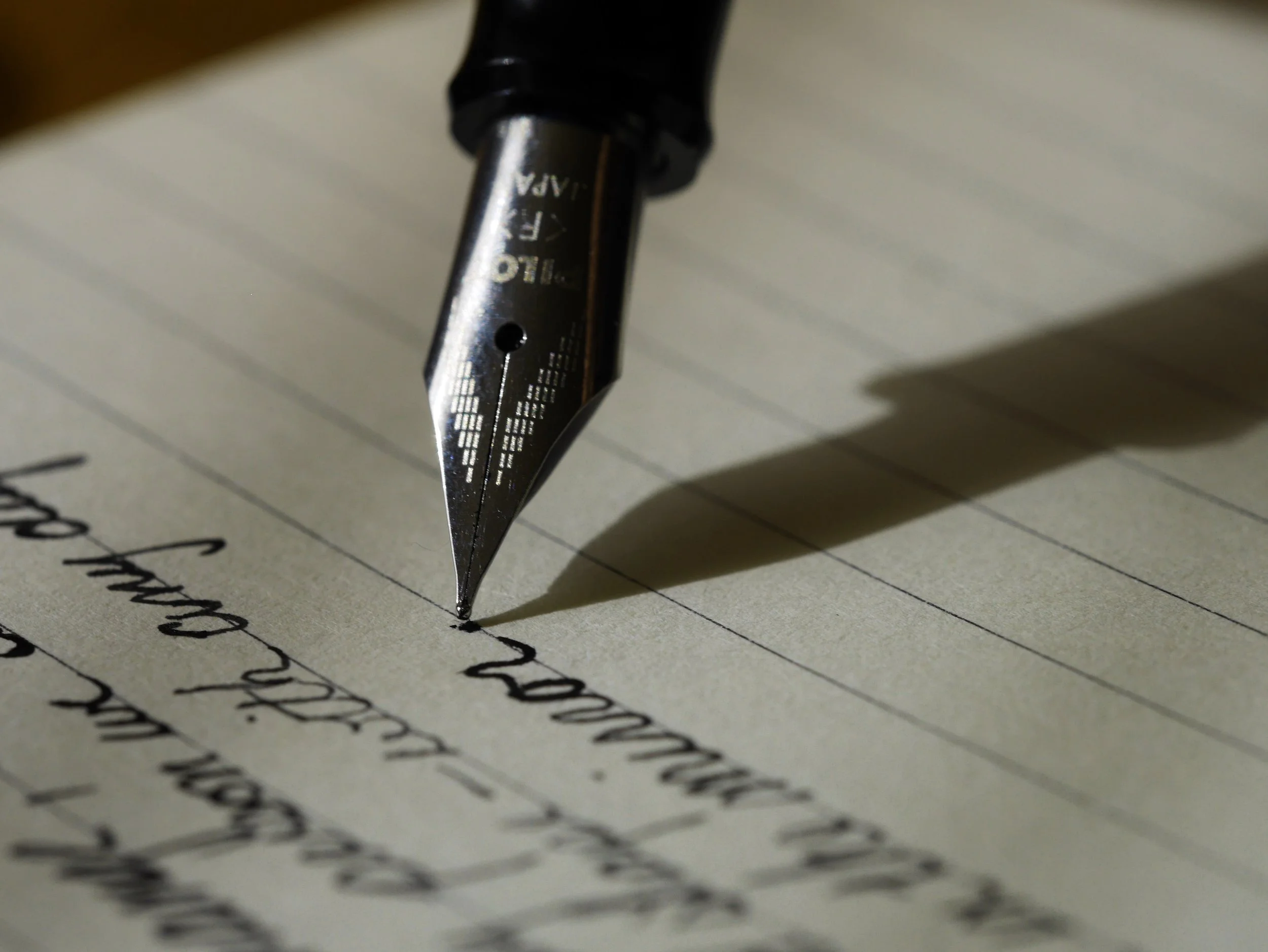The Power of the Pen

In a recent travel writing workshop, my leader assigned me a seemingly impossible task: sit somewhere for an hour and write down everything I notice. Do not make connections outside that space. Just describe. For an hour.
Quite frankly, this sounded like torture.
Asking me not to make connections is like asking me not to breathe. My brain constantly hops from topic to topic like a little frog dancing from lily pad to lily pad in no particular order. How can I spend a whole hour NOT making connections? I pictured myself typing out half a sentence, deleting it, typing, deleting, on repeat through most of the hour.
But earlier in the trip, my workshop leader told us, when we encounter new situations, our brain seeks to make connections between the unknown and the known so we can create context. The goal of travel writing is to shake off the known, explore the things that don’t connect to our everyday lives or our past, create completely new context, and then notice how the novelty changes us.
He wanted me to start my exploration of the unknown by logging details.
To perform my assignment, I took myself to a small café just on the outskirts of a very busy piazza. I sat at the last of a row of outdoor tables placed across a pedestrian street from the interior of the café. A man who I assumed was the owner languidly untangled himself from his seat and conversation at the two-top next to the café door, walked across the street, and took my order for a cappuccino.
Then I took out my lined notebook, a ball point pen, and began jotting down details.
This was a change for me. I usually write on a laptop, typing out words, quickly backspacing and replacing when I either catch a typo or think there’s a better phrase for what I’m saying. My brain will jump around my essays like each part is another lily pad, bouncing from creation to editing and back in seconds. Even now as I write this, I see a red squiggle of a misspelled word and must resist the temptation to stop the flow of my typing mid-thought to correct it. But if I do that, I’m not sure my thought will ever get completed.
Sitting at the cafe table, I was free from any form of internal editor. No-one ever needed to read the words I was capturing on paper. I could jump from detail to detail with no worry about exact word choice or flow or order. I had no delete key. My pen jaunted freely across the paper, the flow of its ink unchecked by my internal critic.
I scribbled description after description: water stains on ochre walls; sepia-tinged clouds; the two well-dressed older men walking by who I thought were probably a gay couple until I noticed a pair of similarly aged and dressed women in animated conversation 20 feet behind them most likely their wives; the late 30-something rock and roll couple who sat two tables away the man pushing his sunglasses up into his shaggy brown hair as the fur-vested blond woman across the table leaned in to talk with him; the clean-shaven 20-something man whose tennis shoes bounced constantly under his seat as he talked to a redheaded partner reclining confidently against the back of her chair as though she had been pulled right off the cover of a luxury magazine. I was extremely happy when she pulled a bag of American Spirit tobacco out of her black-leather Birkin bag and rolled herself a cigarette. I’m sure if I spoke Italian, I probably would have recorded their verbal conversation instead of just their body language.
I was so entranced with details that I forgot to sip the cappuccino the black-haired punk waitress dropped at my table. After twenty or thirty minutes of the perfect leaf design remaining untouched, I noticed her combat boots and ripped fishnets in the corner of my view, near my table. I looked up. She smiled, “Is something wrong with your café?”
“No,” I said and took a sip. “I was just so busy writing.”
She smiled again.
This is when, by accident, my mind made its first connection. I remembered a trip to Spain with friends in the world before the internet. Each afternoon, we took a breaks from our explorations to sit at a café table writing postcards and journal entries about the Miro Museum, the man in the ice cream shop who gave us free shots of apple liquor and asked us to go dancing, the tastes and smells of a Barcelona market. It was not just experiencing these things that mattered. Taking the time to capture them in the journal planted their colors, tastes, and moments more solidly in my mind than if I’d had a smartphone to snap their pictures. How could even a simple coffee compete with the richness of recorded detail in this moment or in long-ago memory?
Since that afternoon, I’ve tried to keep pen and notebook with me in my purse. It helps me break through the tyranny of white page and keyboard to unlock other parts of mind and memory. Perfect for a memoir or CNF writer.